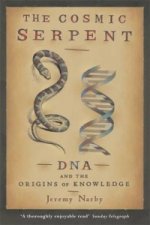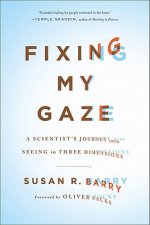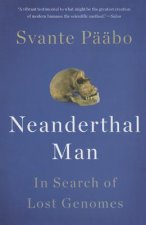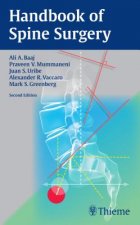
Kód: 09201210
Hypocretins
Autor Luis De Lecea, J. Gregor Sutcliffe
The first report that rapid eye movements occur in sleep in humans was published in 1953. The research journey from this point to the realization that sleep consists of two entirely independent states of being (eventually labeled ... celý popis
- Jazyk:
 Angličtina
Angličtina - Väzba: Brožovaná
- Počet strán: 441
Nakladateľ: Springer-Verlag New York Inc., 2014
- Viac informácií o knihe

139.54 €

Skladom u dodávateľa v malom množstve
Odosielame za 12 - 15 dní
Potrebujete viac kusov?Ak máte záujem o viac kusov, preverte, prosím, najprv dostupnosť titulu na našej zákazníckej podpore.
Pridať medzi želanie
Mohlo by sa vám tiež páčiť
-

Descriptive Catalogue of the Books Printed in the Fifteenth Century Lately Forming Part of the Library of the Duke Di Cassano Serra
42.58 € -

Ethnobotany of India, Volume 4
178.66 € -

A MEMORIAL DISCOURSE ON THE CHARACTER OF
33.16 € -

Compend of English Grammar (Classic Reprint)
15.96 € -

James K. Polk: Jacksonian, 1795-1843 Volume I
88.15 € -

Illustrated Course Guide: Microsoft (R) Office 365 & Excel 2016
60.91 € -

KS2 Maths Arithmetic SATs Practice Question Book
7.16 € -4 %
Darčekový poukaz: Radosť zaručená
- Darujte poukaz v ľubovoľnej hodnote, a my sa postaráme o zvyšok.
- Poukaz sa vzťahuje na všetky produkty v našej ponuke.
- Elektronický poukaz si vytlačíte z e-mailu a môžete ho ihneď darovať.
- Platnosť poukazu je 12 mesiacov od dátumu vystavenia.
Viac informácií o knihe Hypocretins
Nákupom získate 345 bodov
 Anotácia knihy
Anotácia knihy
The first report that rapid eye movements occur in sleep in humans was published in 1953. The research journey from this point to the realization that sleep consists of two entirely independent states of being (eventually labeled REM sleep and non-REM sleep) was convoluted, but by 1960 the fundamental duality of sleep was well established including the description of REM sleep in cats associated with "wide awake" EEG patterns and EMG suppression. The first report linking REM sleep to a pathology occurred in 1961 and a clear association of sleep onset REM periods, cataplexy, hypnagogic hallucinations and sleep paralysis was fully established by 1966. When a naďve individual happens to observe a full-blown cataplexy attack, it is both dramatic and unnerving. Usually the observer assumes that the loss of muscle tone represents syncope or seizure. In order to educate health professionals and the general public, Christian Guilleminault and I made movies of full-blown cataplectic episodes (not an easy task). We showed these movies of cataplexy attacks to a number of professional audiences, and were eventually rewarded with the report of a similar abrupt loss of muscle tone in a dog. We were able to bring the dog to Stanford University and with this as the trigger, we were able to develop the Stanford Canine Narcolepsy Colony. Breeding studies revealed the genetic determinants of canine narcolepsy, an autosomal recessive gene we termed canarc1. Emmanuel Mignot took over the colony in 1986 and began sequencing DNA, finally isolating canarc1 in 1999.
 Parametre knihy
Parametre knihy
Zaradenie knihy Knihy po anglicky Mathematics & science Biology, life sciences Life sciences: general issues
139.54 €
- Celý názov: Hypocretins
- Podnázov: Integrators of Physiological Signals
- Autor: Luis De Lecea, J. Gregor Sutcliffe
- Jazyk:
 Angličtina
Angličtina - Väzba: Brožovaná
- Počet strán: 441
- EAN: 9781461498063
- ISBN: 1461498066
- ID: 09201210
- Nakladateľ: Springer-Verlag New York Inc.
- Hmotnosť: 712 g
- Rozmery: 25 × 155 × 26 mm
- Dátum vydania: 27. November 2014
Obľúbené z iného súdka
-

The Molecule of More
16.47 € -23 % -

Evolution
28.86 € -8 % -

Power, Sex, Suicide
13.10 € -18 % -

Psychopath Inside
16.88 € -13 % -

Murderous Minds
16.37 € -6 % -

Science of Meditation
11.05 € -23 % -

Oxygen
12.28 € -23 % -

Race Differences in Intelligence
35.83 € -

Equine Genomics
229.75 € -

The Selfish Gene
11.66 € -19 % -

Undoing Project
11.05 € -15 % -

Biology of Belief
17.70 € -23 % -

Power of Habit
12.07 € -24 % -

Sapiens
21.49 € -

Lifespan
24.15 € -23 % -

The Extended Phenotype
13.30 € -23 % -

Into the Magic Shop
15.04 € -22 % -

Homo Deus
11.35 € -21 % -

Cosmic Serpent
10.43 € -28 % -

Greatest Show on Earth
11.25 € -22 % -

Speculations on the Evolution of Human Intelligence
9.72 € -7 % -

Blind Watchmaker
12.89 € -24 % -

We Are Our Brains
11.46 € -21 % -

River Out of Eden
11.15 € -23 % -

Brain Book
23.54 € -17 % -

Human Brain Coloring Book
17.40 € -28 % -

Crack In Creation
17.50 € -5 % -

Schaum's Outline of Genetics, Fifth Edition
29.07 € -14 % -

Brain Rules (Updated and Expanded)
16.58 € -3 % -

Hidden History of the Human Race
13.91 € -19 % -

Fixing My Gaze
22.41 € -

Neanderthal Man
15.45 € -20 % -

Why We Run
16.78 € -13 % -

On Natural Selection
9.82 € -

Handbook of Spine Surgery
133.50 € -

Cartoon Guide to Genetics
16.58 € -23 % -

Ecological Thought
26.41 € -6 % -

Creative Evolution
18.42 € -4 % -

Brief History of Everyone Who Ever Lived
10.95 € -24 % -

Consciousness
15.96 € -17 % -

Social Conquest of Earth
16.99 € -11 % -

Atlas of Human Brain Connections
143.02 € -

Double Helix
17.91 € -8 % -

Masters of the Planet
16.17 € -21 % -

Vital Dust
32.45 € -

What Mad Pursuit
29.37 € -

Zooarchaeology and Modern Human Origins
121.63 € -

Handbook of Schizophrenia Spectrum Disorders, Volume I
214.59 € -

Tree of Life
49.55 € -3 %
Osobný odber Bratislava a 2642 dalších
Copyright ©2008-24 najlacnejsie-knihy.sk Všetky práva vyhradenéSúkromieCookies


 19 miliónov titulov
19 miliónov titulov Vrátenie do mesiaca
Vrátenie do mesiaca 02/210 210 99 (8-15.30h)
02/210 210 99 (8-15.30h)